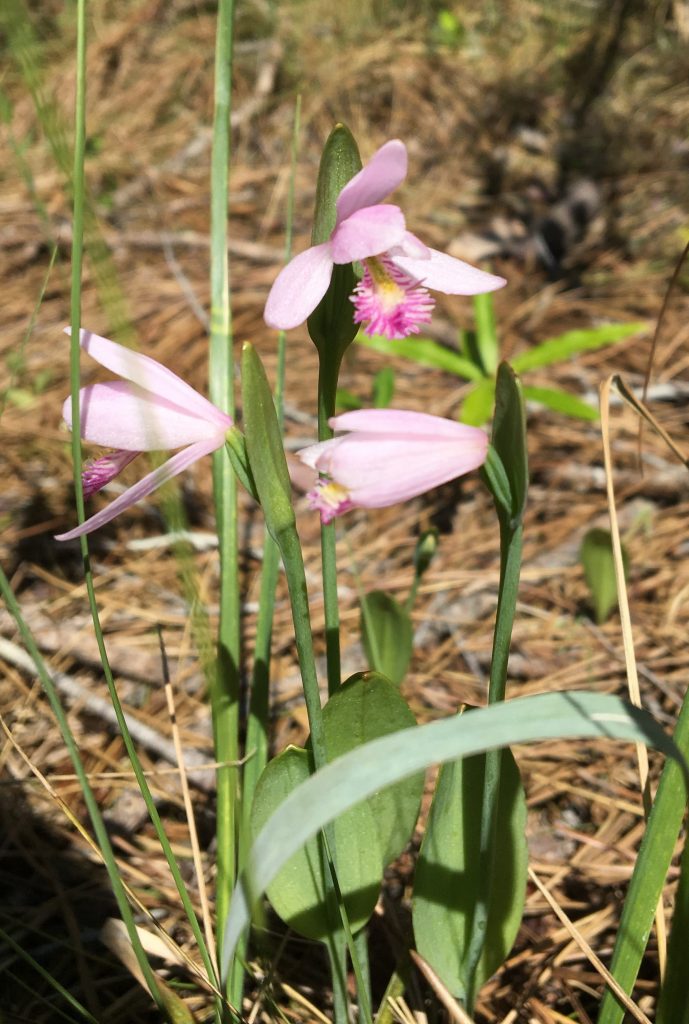I love to watch the parade of wildflowers bloom in my yard, along the roadsides, and across my favorite trails and natural areas each year. And, although they are all special in their own ways, Lady’s Tresses Orchids add a bit of class to the mix. The eloquent spike of small white flowers that spiral around the tall central stalk stand out as proud sentinels everywhere you look.
The fact that they are orchids adds even more to their allure for me and others that typically associate orchids with other countries in tropical settings. Most folks also think of orchids as epiphytic: growing attached to other plants = “epi” meaning “on” and “phytic” meaning plant. Spiranthes vernalis is actually one of several species of Lady’s Tresses orchids that call coastal Mississippi home, and along with a dozen or more additional species, are part of a rich diversity of terrestrial orchids – those that grow in soil.
Orchid flowers are some of the most intricate structures in the plant world and come in some of the most dramatic shapes and sizes. For many tropical species, the flowers can only be pollinated by one or just a few species of insects that can navigate the intricate twist and turns of the elaborate structure of the flower.
These close relationships between plant and pollinator have evolved over long periods of time in the relatively stable climates of the tropics. In our milder and less predictable region of the globe, there is less of an opportunity to develop these exclusive partnerships, although there is much to be learned about the pollinators of our orchids.

In any case, our terrestrial orchids are beautiful, come in a rich variety of colors, and appear throughout most of the year. In addition to at least three species of Lady’s Tresses (blooming from spring through fall), the coast is home to spring-bloomers like Grass-Pink Orchid, Spreading Pagonia, and Rose Pagonia and fall-bloomers like Yellow Fringeless and Yellow Fringed Orchids. Many of these can be found in wet pine savannas, wet open woodlands, and swamps and bogs. The only truly epiphytic orchid in our region is the Green-Fly Orchid, aptly named Epidendrum conopseum, that grows over water along the banks of coastal rivers like the Pascagoula.
So, take a moment to get to know one of our most common native orchids growing right in your front yard. Take a close look at the intricate flowers and watch for the insects that are helping to pollinate and set seeds for the next generation of plants. Then, when you are “hooked” by the beauty of your front-yard orchids, head out to a local savanna and look for the pink flowers of Grass-Pink and Rose Pagonia blooming now in late spring and head back there in July and August to catch the yellow blossoms of Yellow Fringeless and Yellow Fringed Orchids. If you find your way up any of our coastal rivers, watch for the clusters of Green-Fly Orchid attached to branches of trees that hang over the water.
And yes, the yellow flies and mosquitoes are out and about this time of year, but our orchids and other beautiful wildflowers are worth the adventure.
Hope to see you all in our great outdoors!!!